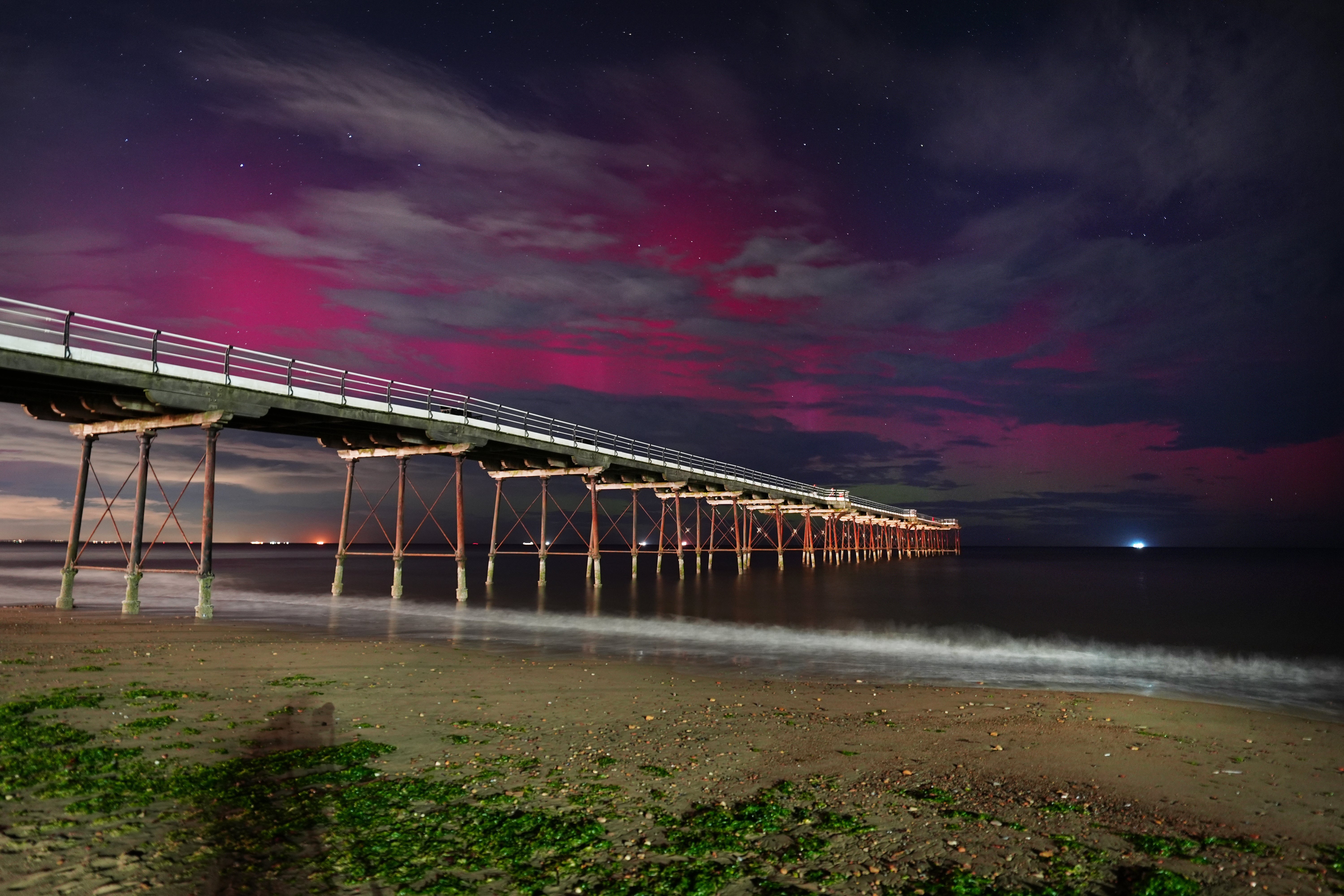
The Northern Lights were visible across parts of the UK and Ireland overnight and may appear again on Tuesday following a powerful solar storm.
The display was caused by a fast-moving coronal mass ejection (CME) that left the Sun late on Saturday and was forecast to reach Earth between Monday and early Tuesday.
The Met Office earlier said the resulting geomagnetic activity could make the aurora visible further south than usual, provided skies are dark and clear.
Stargazers on Monday night reported sightings in north-east Scotland, northern England and the Midlands, with photos on social media showing the lights as far south as West Cork in Ireland.
Photography can help if visibility is still tricky under clear skies, the UK’s forecaster said.

But there are several factors that may affect visibility.
Tuesday and Wednesday will see night-time viewing conditions worsen, but northern Scotland and northern England are likely to have the clearest skies, although still not ideal viewing conditions.
A waxing gibbous moon, which means it is between a half and a full moon, could disrupt clear views of the aurora, particularly in areas with additional light pollution.
For those in more marginal locations, further south or in urban areas, light pollution will play a significant role in determining whether the aurora can be seen.
Krista Hammond, Met Office space weather manager, said: “Forecasts can change rapidly, so we encourage the public to stay updated with the latest information.”
A coronal mass ejection is a release of plasma and magnetic field from the Sun’s corona, the outermost part of the Sun’s atmosphere.
These ejections can travel at speeds of up to several million kilometres per hour and, when directed towards Earth, can interact with the planet’s magnetic field.
This interaction can trigger geomagnetic storms, which in turn can produce displays of the aurora.







